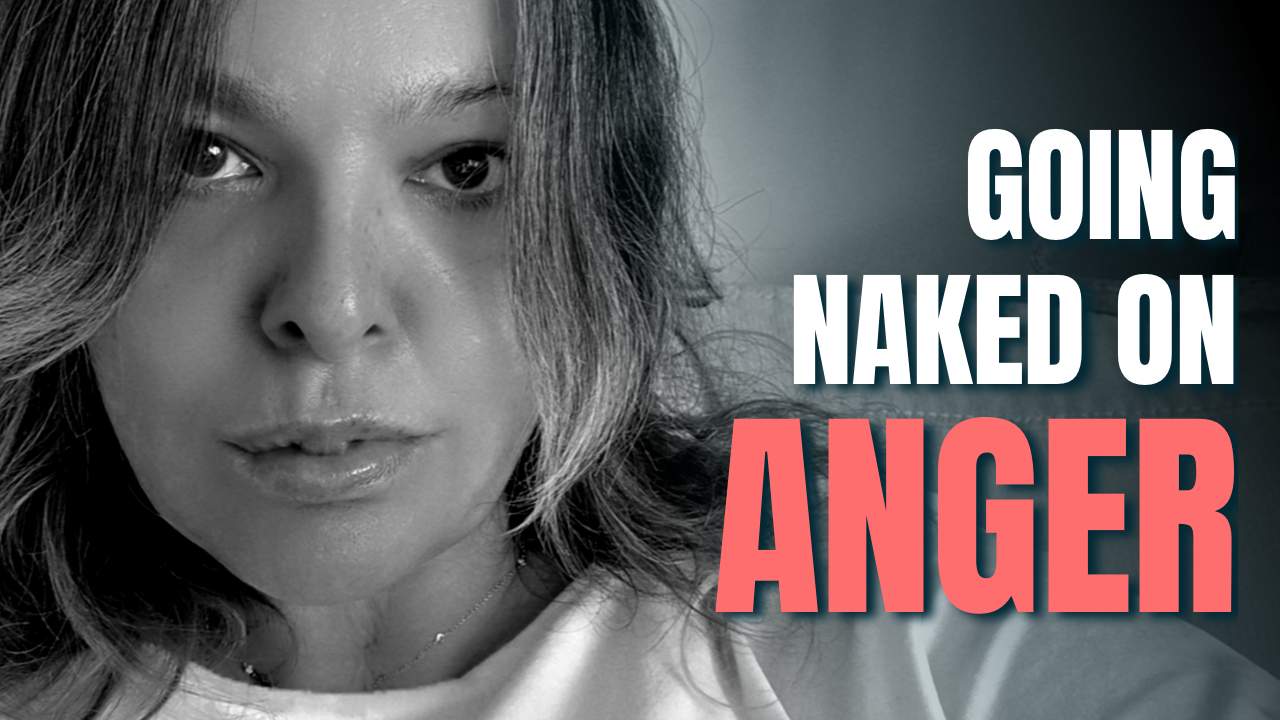I woke up angry today.
I don’t like being angry. I would have preferred to be joyful, light, grateful. But this morning, anger sat heavy on my mind. The first email I saw was from a coaching institute I recently bought a program from — it spoke of abundance and gratitude. That only made me angrier.
It sounds silly. But it didn’t feel silly. It felt… invasive. So I asked myself: Why am I so angry?
Then I remembered.
Yesterday, I had a call with a manager from that coaching institute. I’d canceled the call initially, sensing it would turn into a sales conversation for a program I didn’t want. But they reached out again, saying it was simply a chance to align around my goals. I agreed.
From the first minute, I felt something was off. She interrupted me, steered my story back to her script, insisted she wasn’t selling—but of course, she was. She pressured me to share a vision I normally guard carefully, even with friends. It didn’t feel like an invitation. It felt like a push. She had an agenda, even though she promised she didn’t. I have done sales. I know when I’m being sold to. At one point, because she couldn’t follow my thoughts—or maybe because of my accent—she called in her mentor. She spoke to me as if I were a child. I’m 53.
Still, her offer was semi-compelling. I told her I’d just invested in a very similar, high-ticket program and wanted to go through that first. If I still felt a gap, I’d come back. But instead of respecting that, she dismissed it—‘It seems like our program is not for you, you just need a certificate on the wall,’ she said. In that moment, she decided for me.
When the call ended, I felt dismissed, patronized, downgraded—like I was too small to know my own needs. And when I saw that email this morning—all sweet, spiritual, and ‘grateful’—that’s when the anger rose.
At first, I told myself: Let it go. Be positive. Don’t dwell. But then another voice rose: No. Be authentic. Stay angry. There’s something here. That’s when I realized this anger wasn’t a weakness. It was my boundary speaking.
A boundary I didn’t always have. A boundary I fought to rebuild. This call had broken into that space—the safety and sovereignty I’ve worked hard to reclaim. My anger was pointing to the breach, saying: Pay attention.
And just like that, the anger softened. It wasn’t insecurity. It wasn’t irrational. It was protective. Honest. Loyal.
My anger was my friend. Not a flaw. A signal. A guardian of my wholeness.
Anger’s Unpopular Stigma
Anger has never had good PR. It’s the emotion we’re taught to hide. Soften. Swallow. Get too loud, too sharp, too firm—and suddenly you’re “emotional.” “Aggressive.” “Unhinged.” If you’re angry, you appear uncivil—an accusation that, in today’s world, feels almost like a social plague.
Whole systems have been built to manage it—anger management classes, programs, and protocols. And while they may help people in crisis, the name itself sends a clear message: Anger is a liability. A red flag. A thing you need to control before it controls you. As if anger is always dangerous. As if it’s one step away from destruction.
But is it really?
We’re Still Trying to Get Rid of It
Culturally, we’ve come to see anger as the opposite of growth. The opposite of grace. The opposite of “enlightenment.”
You’ll hear it in spiritual spaces: Let go of your anger. High vibes only. Don’t attract negative energy. We try to burn sage and wish it away. Breathe it out. Gratitude-journal over it. But what if we’re not supposed to get rid of it? What if anger is a message, not a malfunction?
Of course, not all anger work is shallow. But let’s be honest—most people, when they hear “anger management,” aren’t thinking of deep emotional work or healing. What they meet instead, especially in court-mandated programs, workplace interventions, or short-term counseling, is something far more surface-level. These systems are built around one goal: containment.
The primary focus is on regulating the external expression of anger—what you do with it, not what it means. The goal is to prevent harm, avoid disruption, and keep the environment safe. So they teach you to notice the signals—your racing heart, clenched fists, shallow breath. They tell you to step away, count to ten, breathe deeply, reframe your thoughts, calm yourself down. Then what?
The real question is—if we’re only teaching people to package their rage in more acceptable forms, while leaving its root message untouched, are we truly healing anything? Or are we turning people into tightly sealed pressure cookers, holding in everything they were never allowed to feel out loud?
When you silence anger without translating it, it doesn’t go away. It waits. It twists. It goes underground. It turns into resentment. Numbness. Passive aggression. Or shame. Because unspoken power doesn’t disappear—it leaks. Often in ways we don’t expect, and can’t control.
When Anger Is Good
Anger is often the first emotion to arrive when something sacred has been violated. It shows up to protect. To alert. To stand between you and harm. Yes, anger can be explosive—but it’s also instructive. Here’s where it’s not just “okay,” but essential:
1. Anger shows you where your boundary was crossed.
It’s not random. Anger rises when something important gets violated—your time, your values, your dignity. It’s your internal watchdog saying, Hey, this matters.
2. Anger gets you to move.
Unlike sadness, which often pulls you inward, anger pushes you forward. It stirs energy. It calls you to act, to fix, to defend, to reclaim. That fire in your chest? Sometimes, it’s exactly what gets things done.
3. Anger helps you speak up.
When you’re dismissed, overlooked, or treated unfairly, anger gives you the edge to say, No more. It sharpens your voice when the world wants you quiet. It gives you back your spine.
4. Anger clears the fog.
It can cut through confusion. Suddenly, things feel sharper, simpler. You know what’s not okay. You know what you won’t tolerate. Anger has a way of clarifying what really matters.
5. Anger connects you to your truth.
Swallow it too often, and you lose touch with yourself. But let it speak—and something honest shows up. Not rage. Not violence. Just truth. Anger can be the most honest feeling in the room.
6. Anger protects you when you’re healing.
Especially after trauma. When you’ve been stuck in numbness or silence for too long, anger is often the first signal that you’re alive again. That you remember your worth. That you’re no longer willing to be walked over.
7. Anger is how we stand for what’s right.
Not all anger is personal. Sometimes it shows up for someone else—for injustice, for harm, for something bigger than you. That kind of anger? It can be sacred. It moves mountains.
8. Anger creates unity when values are under threat.
In the face of real danger or dishonesty, shared anger can bond people. It says—we care. We won’t back down. We’ll protect what matters.
Anger is not the villain. It’s the alarm system. And sometimes, the rescue crew.
Using Anger as a Tool, Not a Weapon
Anger gets destructive when we try to weaponize it—when we fire it outward without ever stopping to ask what it’s trying to protect.
But anger isn’t here to burn bridges. It’s here to build boundaries. It’s the loudest voice your authenticity has—the one that screams when something’s not safe, not right, not okay. It doesn’t rise to destroy. It rises to protect. To wake you up. And in that heat, it gives you power. The kind that remembers your worth. The kind that doesn’t whisper.
So the next time anger rises, instead of pushing it down or unleashing it, talk to it and ask:
- What are you trying to protect?
- What value of mine is being dishonored?
- What truth are you asking me to see that I’ve been avoiding?
- Are you pointing to a boundary I didn’t know I needed—until now?
- What have I been tolerating that you can no longer let me ignore?
- What part of me have I silenced that you’re finally giving a voice to?
Listening to anger doesn’t mean you let it drive the car. It means you give it a seat at the table. You hear it out. You take its wisdom, not its volatility. That’s how anger becomes a tool—not a tantrum. Not a mask for powerlessness, but a compass for truth.
Anger is not the problem. The real problem is a world that doesn’t want to hear what anger is trying to say—a world that would rather you stay quiet, agreeable, spiritual, grateful, even when something inside you is screaming no. But here’s what I’ve learned: the moments I’ve listened to my anger—really listened—are the moments I’ve taken something back. My voice. My dignity. My direction. My self-respect.
So I don’t want to silence it anymore. I will let it remind me of who I am, and what I will never allow again.



